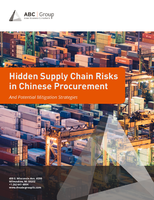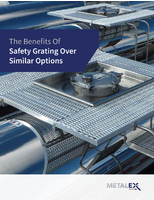Independent Test Lab, Kiwa Verifies High Break Resistance of TULiPPS Prototype Solar PV Module with Ultra-Thin Glass
Share:
EINDHOVEN, THE NETHERLANDS - "You have confidence in a technology and believe it will work as you have designed it," says TULiPPS Solar B.V. Founder and Managing Director, Paul Stassen, "but you can't be sure until and unless you test it. Only then do you find out if all your plans and assumptions were correct or completely inadequate." Stassen, inventor of the technology platform used on the company's patent-pending COSMOS(TM) frameless solar photovoltaic (PV) modules, was extremely pleased to learn that independent solar-module testing and certification organization, Kiwa N.V. (Apeldoorn, The Netherlands) was unable to break TULiPPS' new 120-cell/500-watt-peak prototype modules during exploratory testing of two units subjected to rigorous industry-standard Hail Impact and Module Breakage tests at facilities in Legnano/Milano, Italy.
COSMOS modules are the first to use a unique composites-based frameless construction method and lightweighting design techniques borrowed from the automotive industry in combination with special 2-mm/0.08-inch toughened solar glass from Ducatt N.V. (Lommel, Belgium) produced via the patented tempering process developed by LiSEC Group (Hausmening, Austria). Each module uses a 3.2-square-meter/34-square-foot, single-layer sheet of tempered glass that is 60% larger than glass typically used on 72 cell/280-watt-peak conventional aluminum-framed PV modules - the largest commonly available commercial modules - but is half the thickness. The combination of thin, strong glass and lightweight design techniques from the automotive industry provides a level of break resistance not previously seen in solar modules subject to aggressive industry tests.
Kiwa is an independent accredited certification organization providing inspection, testing, training, and consulting work. The company maintains strict independence and is not involved in manufacturing, trading, or other activities that might affect its impartiality. Already the reference certifier within the building/construction and energy sector through its Energy Products Division's accredited testing laboratory, Kiwa offers testing and certification services for solar thermal collectors and systems as well as PV modules according to International Electrotechnical Commission (IEC) standards.
During exploratory testing of two 500-watt-peak COSMOS modules at Kiwa/IRcCOS in Legnano/Milano, Italy, Ing. Fabio Lo Castro, Ph.D., laboratory manager, performed two very-challenging tests. One module was subjected to the Module Breakage Test (IEC EN 61730-2:2009 10.10) in which a 45.5-kilogram/100-pound ball is suspended above and at a distance out from the module (the latter can be varied) and then released. The test is designed to break the module (simulating a worker falling onto it during installation or maintenance) with the goal of seeing how the glass fractures and the size pieces it breaks into after impact. A second 500-watt-peak COSMOS module was subjected to the Hail Impact Test (IEC EN 61215:2006 10.17). Here, ice balls, which are 25 mm/1.0 inch in diameter and weigh 7.5 grams/0.3 ounces, are projected from a pipe mounted 0.5 meters/20 inches from the module at specific target locations.
During two full days of testing at the Kiwa/IRcCOS facility, a preliminary investigation was conducted to evaluate durability of the prototype modules. Since it was important to understand the limitations of the face glass that protects underlying PV cells, tests were modified slightly to select the most severe settings available. For instance, the impact ball in the Module Breakage Test has three height settings of 30, 50, and 122 centimeters/12, 20, and 48 inches above and out from the module. During normal certification testing, the ball is dropped from the lowest setting first; if the module survives, then it is impacted again from the next highest setting, and so forth. However, for TULiPP's module, the test was started at the most severe setting of 122 centimeters.
For the Hail Impact Test, ice balls were shot at locations considered to be the most severe (in the center and along edges). Furthermore, these locations were hit using peak kinetic impact energies that were five-times higher than are normally used during certification testing (51.5 meters/second (10 Joules)/115 miles/hour (7.4 foot-pounds of force) instead of 23 meters/second (2 Joules)/51.5 miles/hour (1.5 foot-pounds of force)).
Before formal testing began, baseline electrical output for each module was established by "Flash testing" with sunlight-simulating test equipment according IEC 60904-09. At exactly 25 degrees Celsius/77 degrees Fahrenheit, a module is exposed to a light flash of 1,000 watts/square-meter (0.64516 watts/square-inch) intensity per American Society for Testing & Materials (ASTM) Air-Mass (AM) 1.5 terrestrial references spectra for PV performance evaluation, and the amount of electrical power it generates is measured and recorded. This quantitative test is typically conducted on modules before and after Hail Impact tests to determine if there has been any output loss, with modules being required to sustain no more than 5% output loss/retain 95% of their electrical output.
In the case of the COSMOS modules, since no one knew how much energy the thin glass could absorb before breaking or causing the PV cells underneath to fracture, a second qualitative examination was also conducted on both modules. This procedure - essentially the opposite of Flash testing - is called Electroluminescence testing and it identifies cracked or broken cells visually by feeding normal electrical power into a PV module positioned in a dark room. When cells in the module begin emitting/radiating light, a special photograph is taken. By comparing "before" and "after" images, it is possible to see damaged cells, which do not light up but remain dark/black.
For the Hail Impact Test, ice balls were shot at locations considered to be the most severe (in the center and along edges). Furthermore, these locations were hit using peak kinetic impact energies that were five-times higher than are normally used during certification testing (51.5 meters/second (10 Joules)/115 miles/hour (7.4 foot-pounds of force) instead of 23 meters/second (2 Joules)/51.5 miles/hour (1.5 foot-pounds of force)).
Before formal testing began, baseline electrical output for each module was established by "Flash testing" with sunlight-simulating test equipment according IEC 60904-09. At exactly 25 degrees Celsius/77 degrees Fahrenheit, a module is exposed to a light flash of 1,000 watts/square-meter (0.64516 watts/square-inch) intensity per American Society for Testing & Materials (ASTM) Air-Mass (AM) 1.5 terrestrial references spectra for PV performance evaluation, and the amount of electrical power it generates is measured and recorded. This quantitative test is typically conducted on modules before and after Hail Impact tests to determine if there has been any output loss, with modules being required to sustain no more than 5% output loss/retain 95% of their electrical output.
In the case of the COSMOS modules, since no one knew how much energy the thin glass could absorb before breaking or causing the PV cells underneath to fracture, a second qualitative examination was also conducted on both modules. This procedure - essentially the opposite of Flash testing - is called Electroluminescence testing and it identifies cracked or broken cells visually by feeding normal electrical power into a PV module positioned in a dark room. When cells in the module begin emitting/radiating light, a special photograph is taken. By comparing "before" and "after" images, it is possible to see damaged cells, which do not light up but remain dark/black.
Adds Stassen, "The outstanding break resistance that our modules demonstrated in these very challenging, international test protocols was the best news we could have received. It validated our decision to use premium-quality, ultra-thin, ultra-clear, solar glass, tempered with LiSEC's unique technology as utilized by Ducatt. The unique combination of extra strength and ductility this glass provides is the perfect complement for our frameless automotive-grade composites-based support system, helping us set a new standard for lightweight and safe solar PV modules."
Solar Modules Nederland (Kerkrade, The Netherlands) manufactured the PV laminates used in the COSMOS prototype modules. John van Laarhoven, R&D manager at the company noted, "Despite their unusual large size, manufacturing the 500-watt-peak laminates was very easy to do. I feel it would be no problem at all for us to implement this technology on a commercial scale."
Jac Hanssen, CEO of Solar Modules Nederland was also very impressed with the test results. He adds, "This is a very innovative PV module concept that is well positioned to become the new benchmark in our industry in terms of low weight, high efficiency and module capacity, as well as safety."
Developed in partnership with leading companies in the automotive composites, roofing, and PV industries, with financial support from the Province of Noord-Brabant in the Netherlands, and with business startup assistance from the Brabantse Ontwikkelingsmaatschappij (BOM), the patent-pending COSMOS module system from TULiPPS was carefully designed to address deficiencies with conventional PV modules while bringing greater value to all members of the solar PV supply chain - from PV module manufacturer, to module installation companies, building owners, and investors. Key to the success of the system is the combination of automotive "lightweighting" strategies, tough automotive-grade composites, an integral frame and support system with plug-′n-play functionality, a proven roof-anchor system that does not penetrate the roof membrane, and Ducatt's special thin solar glass, which provides industry's highest energy conversion/unit area. Owing to the unique versatility of the new module technology, it can be used with both silicon and thin-film PV modules, for flat or pitched roofs (or ground arrays), and for building-integrated PV (BIPV) systems and is easy to implement in existing PV module factories. It has been nominated for the 2012 Dutch Solar Awards.
For more information, see: www.tulipps.com/, or eMail: sales@tulipps.com or call: +31 (0) 40.7516.290, or mail: TULiPPS Solar B.V., High Tech Campus 9, 5656 AE Eindhoven, The Netherlands.
LiSEC is a global company setting new standards in manufacturing quality and technology with machines, software, and services to process and finish flat glass. The company has achieved unrivalled expertise in processing, handling, and thermally treating thin glass, which is lightweight and robust. For more information, see: lisec.com/en, or eMail: info@lisec.com, or call: +43-7475-505-0, or mail: Bahnhofstrasse 34, AT 3363 Hausmening, Austria.
Ducatt is a spinoff from Emgo and is Europe's only exclusive solar-glass manufacturer dedicated to producing, ultra-clear, antireflective, ultrathin, ultralight and toughened low-iron solar glass that is lightweight without sacrificing strength. With tailor-made solutions for crystalline and PV thin-film modules, flat-plate solar thermal collectors, CSP systems, and even greenhouses, Ducatt is well positioned to support the growing interest in solar energy. For more information, see: www.ducatt.com/, or eMail: mail@ducatt.com, or call: +32 (0) 11 559 300, or mail: Industriezone 1050, Balendijk 161, B-3920 Lommel, Belgium.
Kiwa N.V. is active globally in over 40 countries, maintaining full-service offices and laboratories in the Netherlands, Germany, Belgium, Italy, Scandinavia, the United Kingdom, Turkey, and China, plus a network of partners with expertise in certification in 30 additional countries. The group's market emphasis is on water, energy, construction, infrastructure, automotive/transportation, agriculture, feed & food, safety/security, health care, and the environment, with typical clients being manufacturers/processors, business services, public and private utilities, local government agencies, and international institutions from these segments. For more information, see: www.kiwasolar.eu, or eMail: EUP@kiwa.nl , or call: +31 55 5393 605, or mail: Kiwa Energy Products Division, Wilmersdorf 50, P.O. Box 137, 7300 AC Apeldoorn, The Netherlands.
As an experienced producer of photovoltaic modules, Solar Modules Nederland has adopted the innovative Day4 DNA from Day4 Energy to produce state-of-the-art solar modules. With the combination of excellent quality from a Dutch production facility and leading Day4 Energy technology, Solar Modules Nederland offers its customers high-quality, high-efficiency solar modules that provide superior energy yield and reliable long-term performance. For more information, see: www.solarmodulesnl.com/index.php, or eMail: info@solarmodulesnl.com , or call: +31 (0)45 7400400, or mail: Solar Modules Nederland B.V., Klarenanstelerweg 6, Dentgenbach 4170, 6468 EP Kerkrade, The Netherlands.
Paul Stassen
TULiPPS Solar B.V., stassen@tulipps.com
Phone: +31(0)6.462.30452




